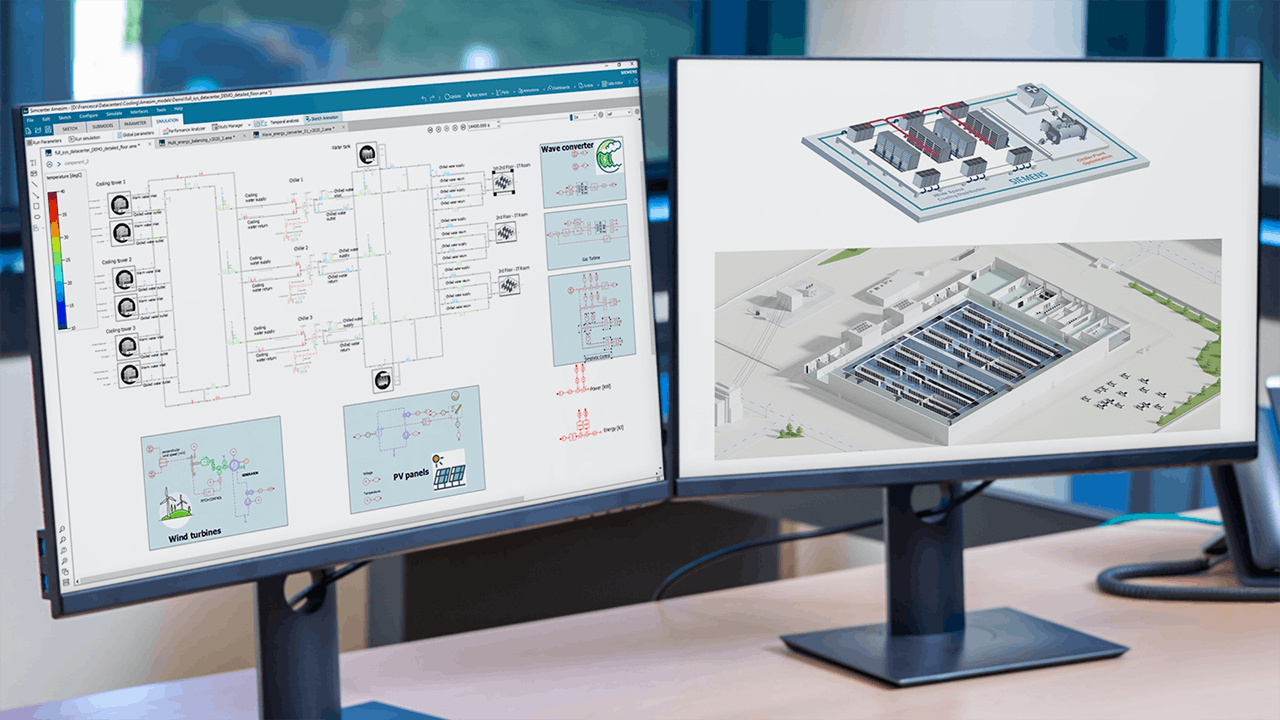Enhancing energy efficiency and sustainability of data centers
Navigating the path to greener data centers through innovation and simulation
With the rise of cloud services, edge computing, the Internet of Things, and other digital transformations, large enterprises rely on big data and data analytics to enhance the efficiency, productivity, security, and cost-effectiveness of their operations. Data centers are the physical infrastructure that houses the servers and other equipment to store and process this data.
In the last few years, the number of data centers has grown 10 to 30% annually to meet the increasing demand for digital services and the need to store and process vast amounts of data. This growth is expected to continue exponentially.
Presently, data centers account for 2 to 3% of the global electricity consumption, with the most significant data centers hosting thousands of servers and consuming between 20 to 50 MW of electricity annually, enough to power 37,000 homes. Faced with increasing energy consumption, data center stakeholders are urged to adopt the latest digital technologies to decrease their carbon impact, with a target to reduce CO2 production by 50% by 2030.
The growing importance of data center energy efficiency
How can data centers meet these ambitious, measurable targets? Applying the newest energy efficiency technologies can considerably reduce operational costs and the ecological footprint along the road to carbon neutrality.
System simulation is one technology that provides valuable insights, identifying the best configuration to meet the requirements, defining subsystems interactions, performing energy analysis with dynamic scenarios, and risk-free virtual commissioning long before any hardware is physically commissioned.
Data centers' role in global electricity consumption
Electricity drawn by Information technology (IT) equipment and the cooling system are the primary two largest energy consumers in data centers. Advanced technologies such as liquid cooling, heat recovery systems, renewables as part of the power supply, and direct current (DC) electric power distribution offer the potential to reduce energy consumption.
Leveraging system simulation for energy efficiency
Join our webinar to see the benefits of using system simulation and other energy-efficiency technologies to design more efficient and sustainable data centers. The following application examples will be used throughout the webinar:
- Definition of the best liquid cooling layout to minimize the cold plate temperatures in a data center cabinet rack.
- Power consumption analysis in a conventional air-cooled data center.
- Early verification and validation of PLC controllers to adapt the cooling power availability to variable ambient conditions and IT loads.
- Verification of green energy availability and the correct power mix to achieve the target scopes in the carbon-neutral roadmap.
Relatore

Francesca Furno
Business Developer for System Simulation
Francesca Furno has received her MSc Degree in Mechanical Engineering as well as her Ph.D Degree in Fluid Power from the Politecnico di Torino in Italy.
She furtherly moved to France to join Siemens in 2007 and today she is promoting Simcenter Systems solutions as engineering tool to drive innovative technologies. Francesca is supporting the Industrial Machinery market Worldwide in adopting digitalization.
